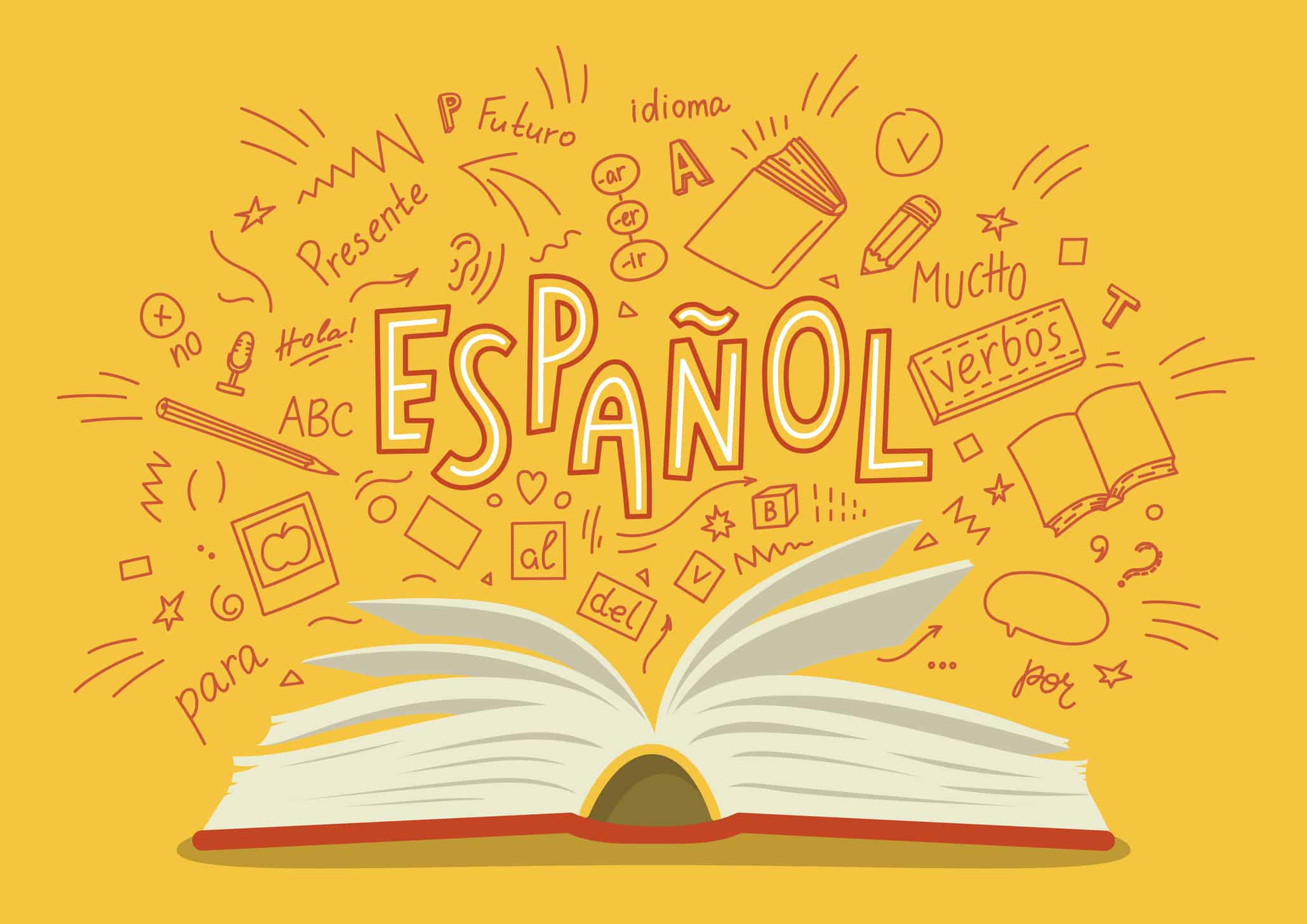
From punctuation to pronunciation, move your Spanish up a notch by reading our latest post from Emily, uTalk’s Languages Manager. You’ll learn why Spanish questions are always sandwiched between question marks, why you should really be careful to differentiate between ‘n’ and ‘ñ’ and one of the best ways to train yourself to recognise Spanish orthography.
Whether it’s Latin American, Argentine or Castilian Spanish you’ve started learning on our app, it won’t be long before you come across some letters and symbols unique to the Hispanic world. So yes, they did flip their question marks upside down on purpose and no, you don’t want to get una and uña mixed up!
1. Punctuation
1.1 Or, ¿why isn’t one question mark enough?
While it may not directly affect your speaking, you may be at least a little curious to know why Spaniards write out twice as many question marks as any other language in the world?
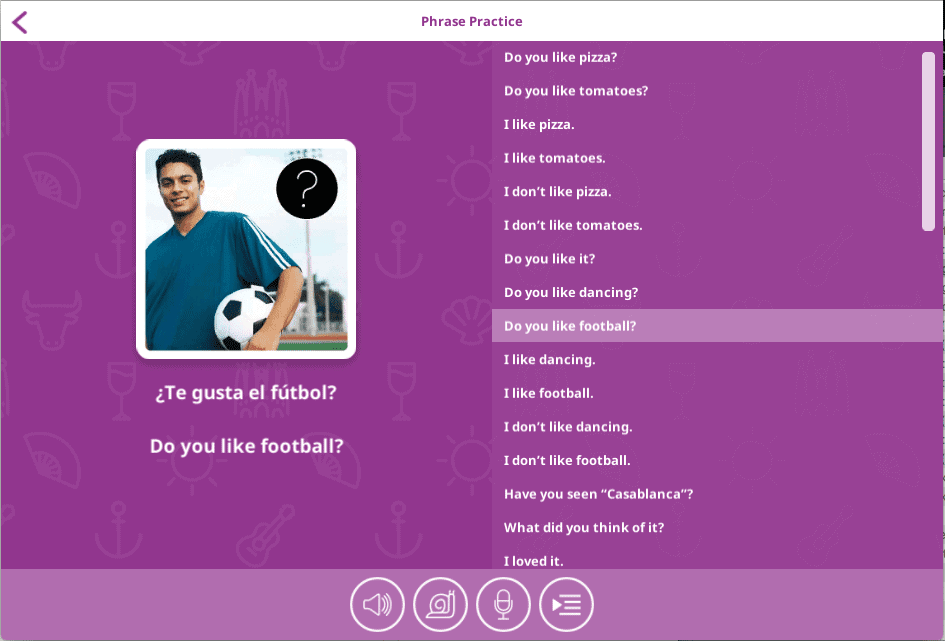
If you’ve used the uTalk app to pick up some Spanish, you may well have already learnt some questions such as ‘¿Te gusta el fútbol?’ (Do you like football?) – but did you know it’s also correct to ask, ‘El fútbol, ¿te gusta?’ Unlike English, Spanish is much more flexible when it comes to word order.
In this example we have a yes/no question, so let’s break it down and take a look at the basic sentence structure:

In English, we instinctively know that if we change this word order then it no longer works as a question. For example, while it still makes sense, ‘You do like football’ is an affirmative statement, not a question.
In Spanish, however, the same word order rules do not apply, and that’s where the handy upside-down question mark comes in! Place the ¿ where the question begins (this is not necessarily at the start of the whole sentence!) and the reader then knows when they should start raising their intonation, which in turn lets the listener know that they’ll be required to respond with an answer.
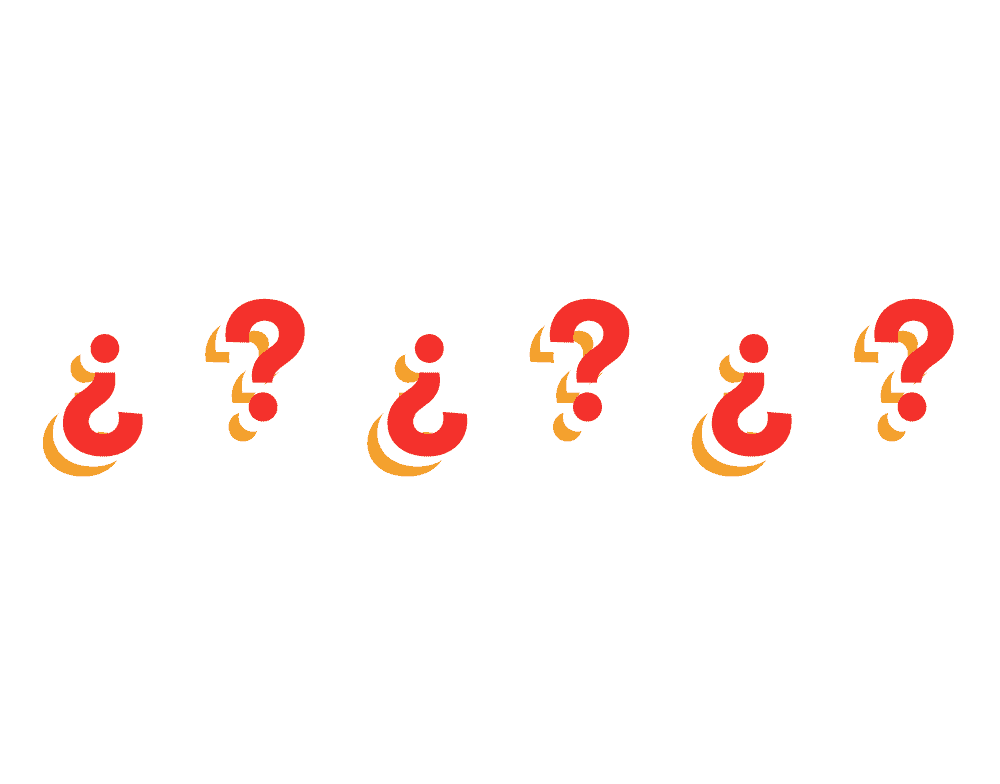
It may feel a little unnatural and odd to get used to at first, but this is good news, especially when you start forming longer sentences, because a lot of the time you can mix and match word order within a Spanish sentence and still be understood.
Here at uTalk, we always say you have to think in your new language, and not translate word for word into your first language – that’s what the Recall game is for! This is certainly true when it comes to Spanish sentence structure.
1.2 ¡Exclamation marks, too!
Similarly, as with question marks, let’s not forget to flip our exclamation marks too. Without wanting to stereotype, it’s no secret that Spaniards can get passionate about what they’re saying, so for example ‘¡Que aproveche!’ (Enjoy your meal!) needs to be expressed with the fitting emotion that comes with when you’re about to tuck into a tasty paella or tortilla!
This also means, for example, if you’re reading a bedtime story to your child in Spanish, you’re never going to have to worry about getting to the end of the sentence and realising you should have been surprised the whole time!

Again, like with the reverse question mark, the exclamation point at the start of the sentence is there to help you to get the right tone of voice and sound like you mean what you’re saying, whatever order the words come out in.
While we’re on the subject of punctuation, there are a couple more differences between English and Spanish that are well worth bearing in mind.
1.3 First, numbers
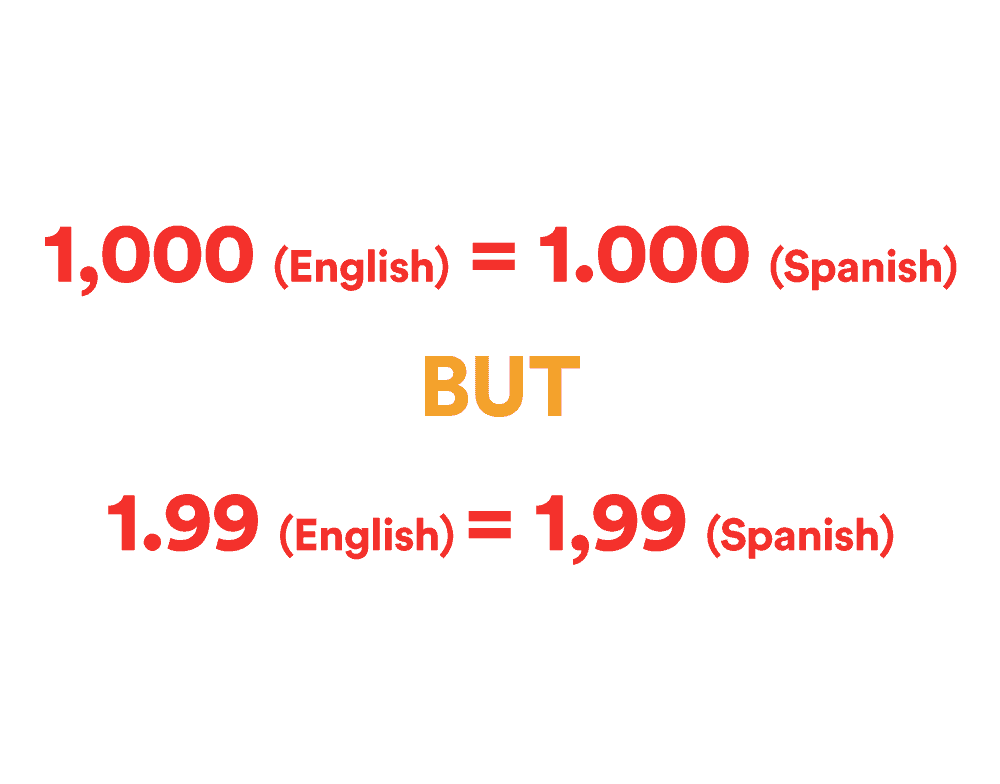
Where in English we would write 1,000 for one thousand, in Spanish this should be written 1.000. This is especially important when we’re talking about money and prices – you don’t want to make a bank transfer for one pound only to find out you’ve sent one thousand by accident instead because you got your dots and commas mixed up.
This actually happened to a friend of mine at work and sadly the recipient refused to return the excess payment. Luckily, she still got to keep her job. Needless to say, she didn’t make that mistake again!
1.4 Next, reading
Read any Spanish newspaper or magazine article and you will often see quotations are surrounded by angular quotes marks «». But, when you find speech in a book, you’ll see it’s placed on a new line and indicated with a long dash:
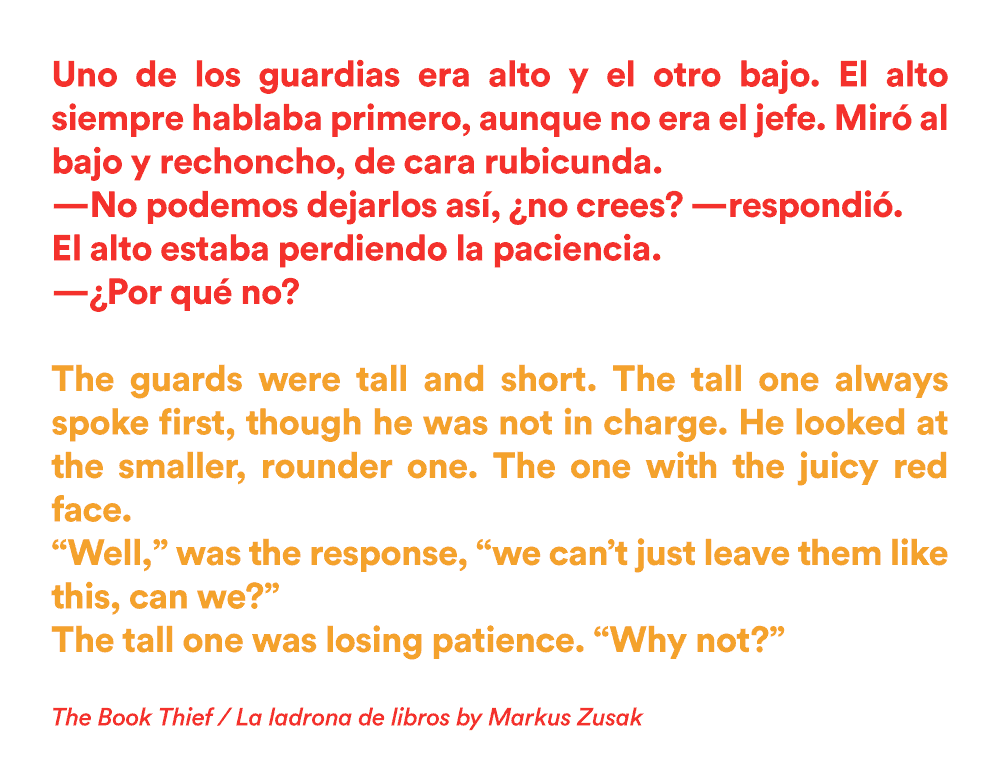
If you delve into a Spanish book you may also notice that there are fewer commas and full stops than in English. (Try ‘Señas de Identidad’ by Juan Goytisolo and you’ll get what I mean!) While full stops are definitely not optional in Spanish, we’ve already seen that word order can be so, grammatically speaking, longer sentences do work just fine.
Just don’t forget to breathe when reading out loud to practise your pronunciation! This may also in part account for why Spaniards are famed for speaking so fast, but we’ll save that for another blog post.
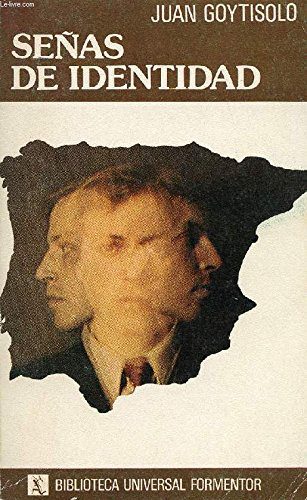
2. From punctuation to pronunciation – using accents right
Moving on from grammatical markers around words, let’s look at some markings on the letters themselves. We’ve already seen the word ‘Que’ in one of our previous examples – ‘¡Que aproveche!’ – but this word is sometimes written with an accentuation mark – ‘Qué’. Why is that? Before we start getting into that, breathe a sigh of relief because there are only three to get to grips with.
2.1 What puts the ñ in Español?
First up, we have the tilde, which nowadays in modern Spanish you will only ever find above the letter n. Think of the ‘ni’ sound you find in the word ‘onion’ and you’ve got ñ down.
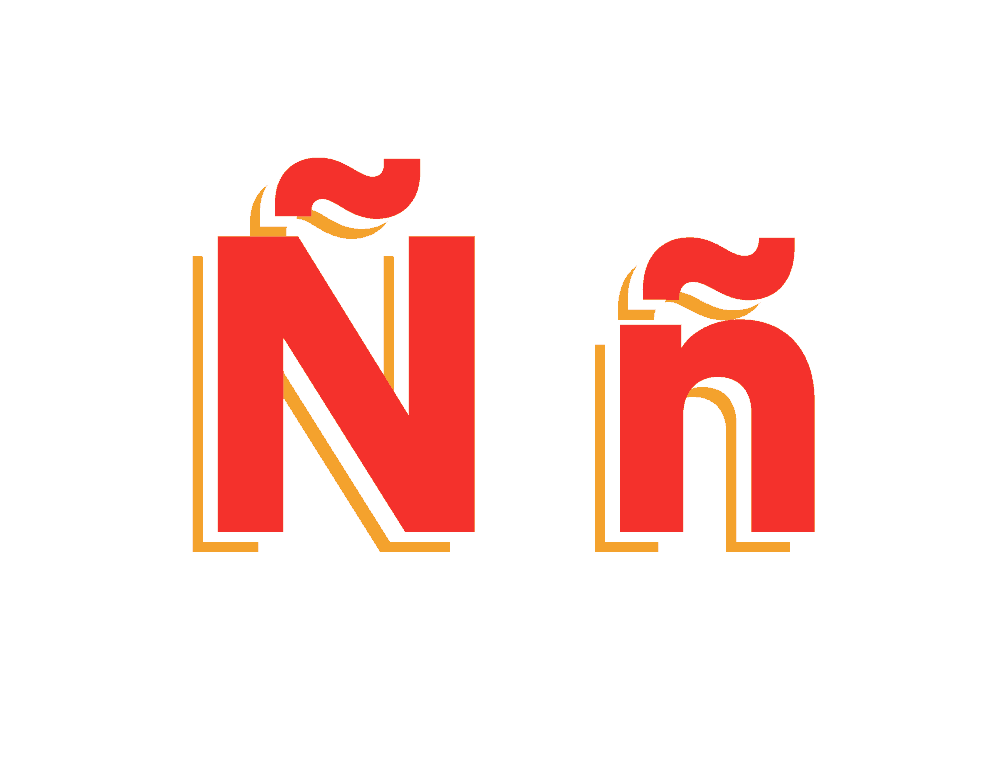
Now, you want to get the pronunciation of ñ right, because you will find it crops up everywhere, including the very name of the language itself (español). You will need it if you want to tell someone your age (Tengo 28 años – I am 28 years old), order a beer in Spain (una caña) and you may even need it more than once within the same word, as you will see in the Ecuadorian term of endearment ñaño/a. From names of places to food and everything in between, time and again ñ will make an appearance, and you’ll undoubtedly develop a fondness for this uniquely Spanish letter.
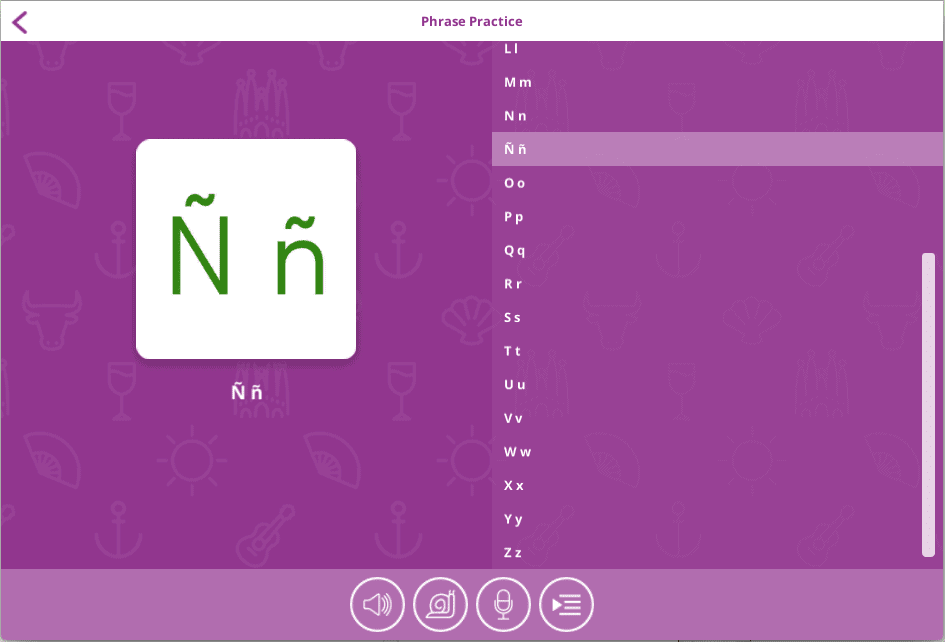
A word of warning here – if you omit the tilde and treat it as a simple n you may find yourself saying something quite different to what you originally intended! For example, ask someone for una caña and you’ll find yourself presented with a cool, refreshing Spanish-sized beer. Perfection! You can’t, however, have uña caña, because uña means fingernail and we’re pretty sure you don’t want any of those in your drink or food!
We’ll leave you to search out other ñ related cautionary tales, but trust us, there are some tilde-related mistakes you definitely don’t want to make, so no excuses for mixing up n and ñ!
Okay, so hopefully you’ve got the picture by now – pronunciation is super important! Let’s just take a quick look at a couple more. And after that, if you’re left wanting more do check out our handy Alphabet topic in the uTalk app to nail all the sounds in Spanish. It’s a lot to take in but believe us, you’ll thank us one day!
2.2 Wait, there’s more?!
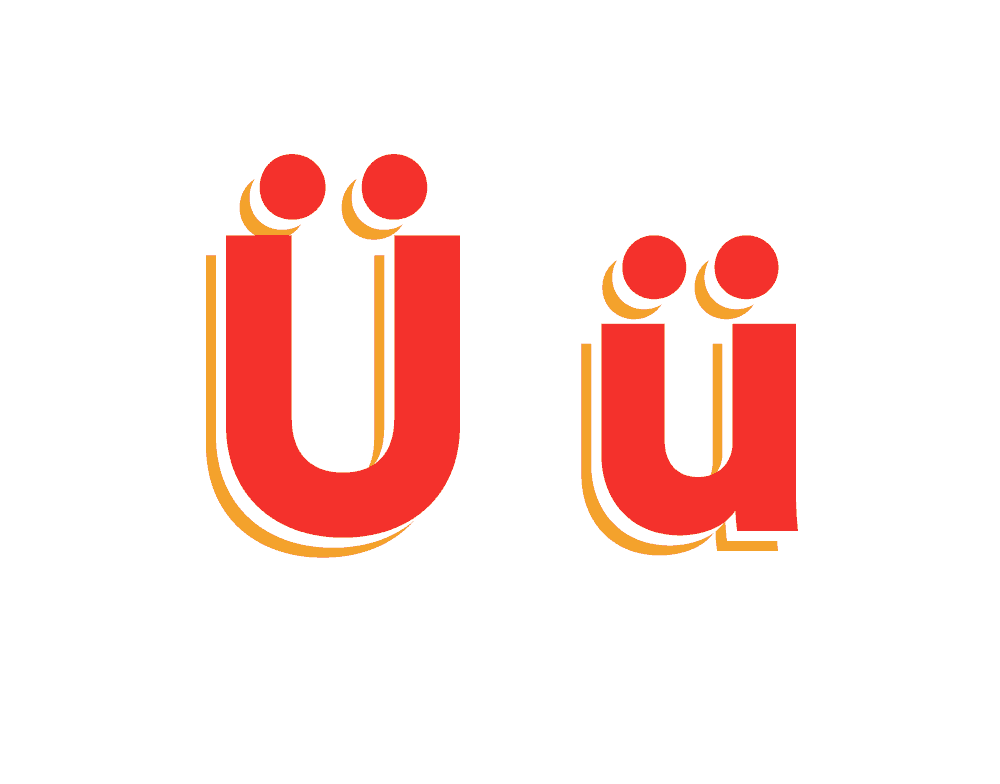
So apart from the tilde (ñ), Spanish is the proud user of the diaeresis (ü) which you’d be forgiven for thinking was the same as the umlaut. You can find it in the word lingüística (linguistics), which is a convenient example as that’s pretty much the subject we’re on right now!
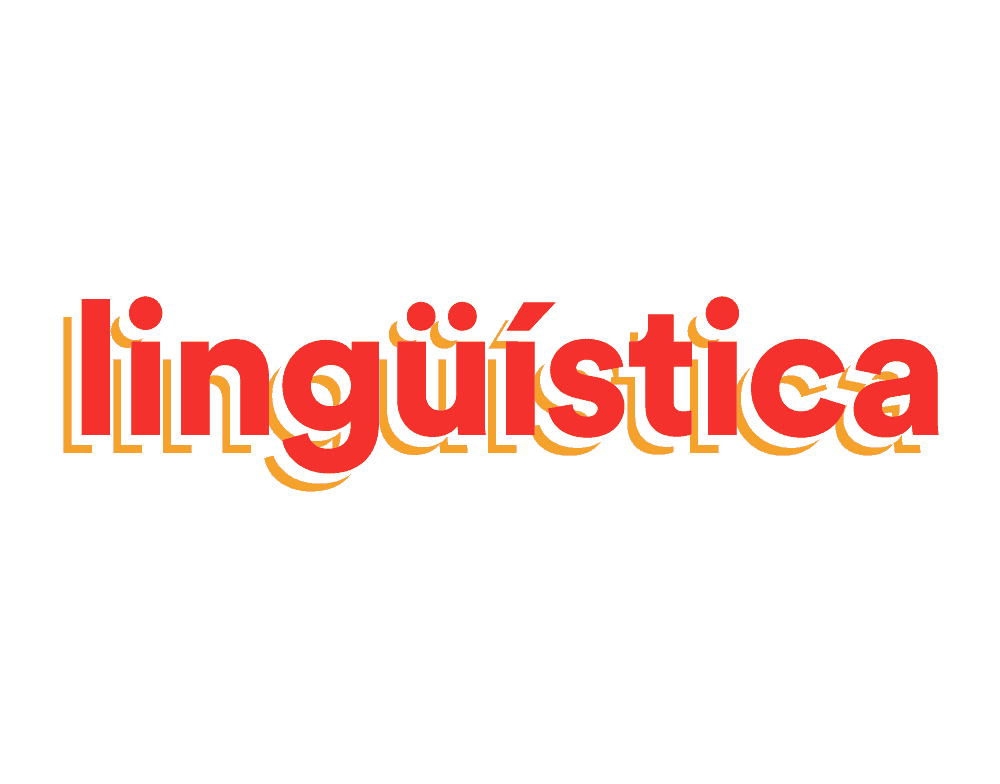
You’ll only ever find diaeresis above the letter u in Spanish, and if it’s not there then the straightforward letter u is generally not sounded out at all (guitarra may as well be written gitarra, as the pronunciation is the same.) Simple!
And what’s that mark on the letter i that also makes an appearance in lingüística, I hear you ask.
2.3 Acute accents guaranteed to lend you a cute Spanish accent
Introducing the third and final kind of accent marking you’ll come across in Spanish – the acute accent! You may see it appear on any vowel and it is a crucial marker when it comes to learning the conditional, simple future and past tenses (imperfect and preterite), as well as acting as a handy aid when figuring out where to place the stress on words. This is especially useful for super long words as is often the case when it comes to compound imperatives like administrándoselo!
Now verb conjugation is obviously a huge area but, remember, acute accents are there to help you know how to get the right stress on the right syllable in Spanish (unlike English where you generally have to figure it out for yourself) so trust us, you’ll end up being very grateful for them!
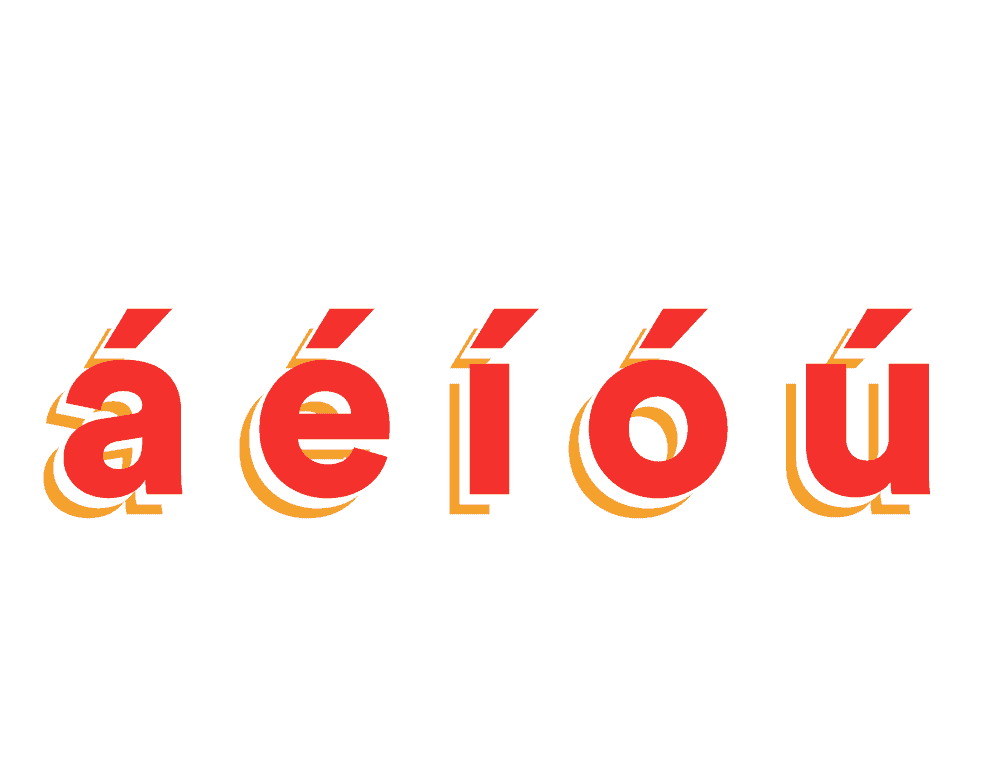
You’ll only ever see acute accents above any one of the five vowels, and unlike the ñ you’ll only ever see a maximum of one per word (with the occasional exception of compound words). So what should you do if you find one?
Let’s go back to our last example, administrándoselo. With seven syllables to choose from, and the same number of vowels, I think you’ll agree it’s just as well we have the acute accent to help us out. Thanks to the acute accent on the letter a in this example we know we have to place the stress of the word on the fourth syllable.
Let’s take a look at tú verses tu. Predictably the pronunciation is affected by the presence or absence of the acute accent. As you would expect the ‘u’ sound in ‘tú’ is longer and more emphatic than in ‘tu’.
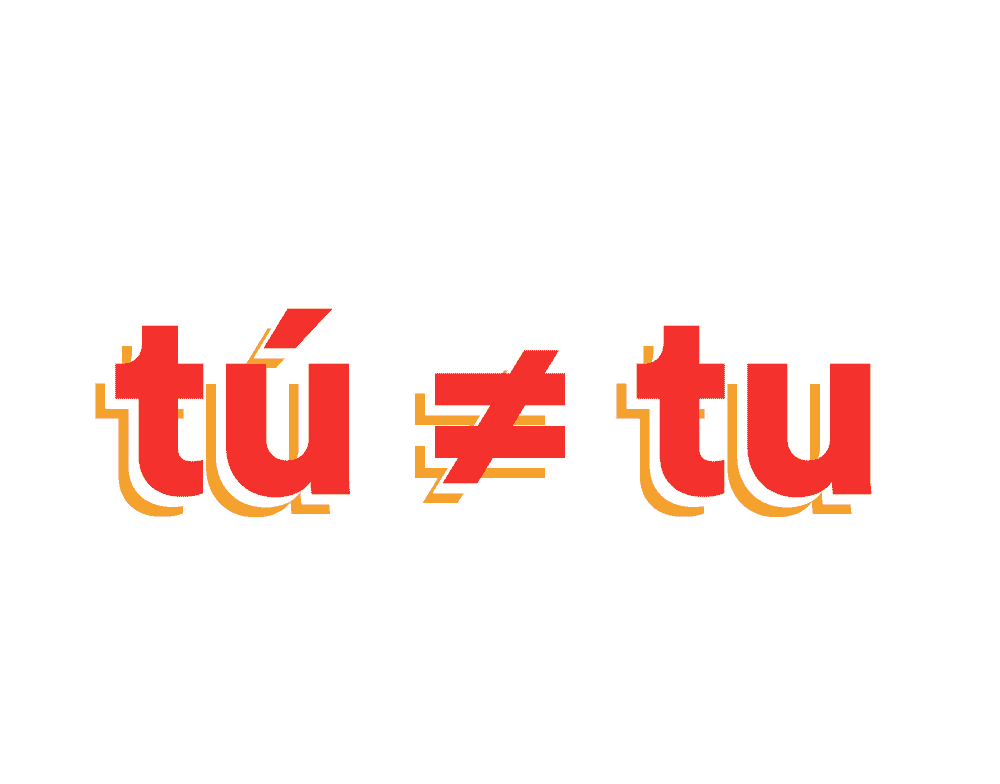
Not only that, but the acute accent changes the meaning as well. ‘Tú’ refers to the subject pronoun ‘you’ whereas ‘tu’ is the possessive pronoun ‘your’. Similar, but definitely not the same!
As a final note, let’s return to one of our very first examples, ‘¡Que aproveche!’ Que literally translates as ‘that’, but add an acute accent on the e and you get ‘qué’ which means ‘what’. A useful question word and reaction to when a Spaniard invites you over for dinner only to find the meal starts at 10pm! (Yes, Spaniards typically do hold on that long before eating dinner!)
As a final note, don’t forget that accent markings not only offer a helping hand when it comes to speaking Spanish, they also contribute to the musical twang of the language which is maybe one of the reasons you’re keen to learn it in the first place! So, although yes, there is a lot of grammar to grasp here, don’t despair because once you’ve got the grammar bits on this post down it’s going to help you sound a lot more native, and thus a lot more fluent, very quickly!
3. Final thoughts
There is so so much more that could be said on the subject of stress, pronunciation, and intonation – but hopefully, this has given you a good head start on what to watch out for as you’re exposed to more authentic Spanish material.
A great way to see it in action is to watch Spanish series with subtitles in Spanish because then it’ll be easy for you to make the connection between what you hear with the orthography (accents markers as well as punctuation!). This, in turn, will help you with your written and, as a result, your spoken Spanish, and that’ll stand you in great stead for your next Spanish experience, wherever that takes you.
¡Buena suerte!
Good explanation for a tricky topic. However, I missed the sound clips.